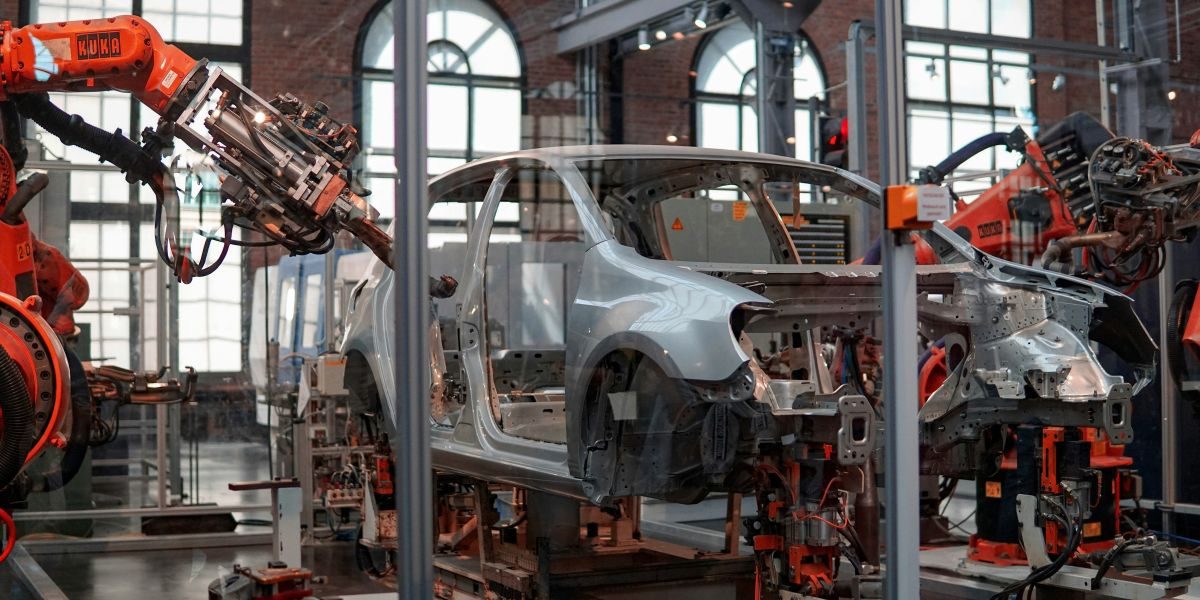Modern vehicles roll off the production line with impressive capabilities, but there’s always room for improvement. Whether you’re chasing better performance, tighter handling, or a more rewarding driving experience, smart upgrades can transform a stock car into something truly special. The key is knowing what modifications deliver real benefits and which are just expensive noise.
Engine Tuning: Unlocking Hidden Potential
Modern engines are packed with potential left untapped from the factory to meet emissions, fuel economy, and reliability standards. ECU (engine control unit) tuning is often the first and most impactful upgrade. A professional tune adjusts fuel delivery, ignition timing, and boost levels (for turbocharged engines), leading to more horsepower, better throttle response, and often improved fuel economy.
Off-the-shelf tunes are available, but a custom dyno tune tailored to your specific vehicle and mods yields the best results. However, tuning isn’t without risks — aggressive tunes can stress components, so it’s important to ensure the supporting hardware is up to the task.
Engine Air Filters: Small Change, Big Results
One of the simplest ways to help your engine breathe better is by upgrading to high-performance engine air filters. These filters offer improved airflow compared to restrictive factory units, which can slightly boost horsepower and throttle response. More importantly, a quality engine air filter protects your engine from contaminants without sacrificing performance. For those planning additional modifications like a cold air intake or ECU tuning, starting with a better air filter lays the groundwork for maximizing gains.
Cold Air Intakes and Exhaust Systems: Breathing Better
Engines are air pumps at heart, so improving airflow can enhance performance. A cold air intake relocates the air filter away from engine heat, delivering cooler, denser air into the combustion chambers. This can add a few horsepower, improve throttle response, and sharpen engine sound.
On the exhaust side, upgrading to a high-flow system reduces backpressure. Cat-back systems (which replace the mufflers and piping but keep the catalytic converters) are popular for their balance of sound and modest gains. Full exhaust upgrades including headers and high-flow cats can yield bigger performance improvements but may impact emissions compliance.
Forgiato Rims: Performance Meets Personalization
Wheels aren’t just for looks — they influence handling, acceleration, and ride quality. Forgiato rims represent the pinnacle of blending luxury aesthetics with serious performance advantages. These custom-forged wheels are lightweight yet strong, improving unsprung weight and enhancing suspension response. Choosing Forgiato rims not only sets your car apart visually but can sharpen steering feedback and reduce strain on suspension components, making them a premium choice for enthusiasts focused on both form and function.
Forced Induction Upgrades: Boosting Big Power
Turbocharging and supercharging can add serious horsepower, especially on vehicles already equipped with forced induction from the factory. Upgraded turbos, intercoolers, and superchargers can push power gains well beyond 50% over stock.
Supporting mods are critical. Fuel injectors, pumps, cooling systems, and internal engine components may need upgrading to handle the extra stress. Slapping on a bigger turbo without preparation is a recipe for blown engines.
Suspension Upgrades: Control and Confidence
Power is meaningless without control. Suspension upgrades are one of the most transformative mods for real-world performance.
- Coilovers: Adjustable coilover kits replace springs and shocks, allowing fine-tuning of ride height and damping.
- Sway Bars: Thicker sway bars reduce body roll, improving stability during aggressive cornering.
- Bushings: Replacing soft factory rubber bushings with polyurethane or solid bushings sharpens handling and steering feedback.
A properly tuned suspension system doesn’t just make a car faster around corners; it makes it more predictable and rewarding to drive every day.
Giovanna Wheels: Style and Strength Combined
For drivers who want elegance without sacrificing performance, Giovanna wheels deliver a winning combination. These wheels are renowned for their bold, high-end designs, but their lightweight construction also contributes to improved acceleration and braking. Giovanna wheels add a layer of personalization and prestige while maintaining durability and everyday practicality, making them a top choice for enthusiasts who refuse to compromise on performance or looks.
Brake Upgrades: Stopping Power Matters
Going fast is fun. Stopping quickly and consistently is critical.
Upgrading brake pads to performance compounds improves bite and resists fade during spirited driving. Slotted or drilled rotors help dissipate heat, and stainless steel brake lines improve pedal feel.
For serious builds, big brake kits with larger calipers and rotors deliver even greater stopping power and heat management. However, they often require larger wheels and careful consideration of brake bias.
Tires: The Ultimate Connection
No upgrade matters more than tires. They are the only part of your car that touches the road.
Sticky, high-performance tires can transform acceleration, braking, and cornering. They provide more grip, quicker responses, and greater confidence. But it’s a trade-off: ultra-high-performance tires wear faster and may perform poorly in rain or cold weather.
Choosing the right tire depends on your driving habits. For a daily driver, a well-balanced performance all-season or summer tire often makes the most sense.
Drivetrain and Differential Upgrades: Putting Power Down
More power means little if you can’t get it to the ground effectively.
- Limited-Slip Differentials (LSDs): Improve traction by sending power to the wheel with the most grip.
- Clutch Upgrades: Necessary if engine output exceeds stock clutch capacity.
- Short-Throw Shifters: Tighten up shift action for manual transmissions, making driving more engaging.
All these upgrades make a car feel more alive, responsive, and in tune with the driver.
Weight Reduction: Power-to-Weight Efficiency
More power isn’t the only way to go faster. Removing weight improves acceleration, handling, and braking.
Simple changes like lightweight wheels, removing unnecessary interior components, carbon fiber body panels, and even lighter batteries make a real difference. That said, aggressive weight reduction can impact comfort, noise levels, and daily usability.
For street cars, a balanced approach — like replacing heavy stock seats with lighter performance seats — delivers noticeable benefits without making the car miserable to live with.
Aerodynamic Enhancements: Stability at Speed
True aerodynamic upgrades improve stability, cooling, and sometimes even fuel efficiency. Think front splitters, rear diffusers, functional spoilers, and air dams.
Effective aero is about balance. Adding a giant rear wing without front-end improvements can make a car unstable at high speeds. Real aerodynamic gains are usually realized at higher speeds (70 mph+), so for daily driving, subtle improvements often make more sense than track-style kits.
Cooling Upgrades: Protecting the Heart
Performance generates heat, and heat kills reliability. Upgraded radiators, oil coolers, and intercoolers help manage temperatures during spirited driving or track days.
A car that can hold its temperature under stress is safer, faster, and longer-lasting. Even a simple coolant upgrade or improved thermal management strategies can be the difference between finishing a track day and ending it on a tow truck.
Interior and Driver-Focused Upgrades: Enhancing the Experience
Performance isn’t just mechanical — it’s also how the driver connects with the machine.
- Performance Seats: Keep you firmly in place during hard driving.
- Steering Wheels: Smaller, thicker wheels can improve driver feel.
- Data Loggers and Displays: Show real-time data like boost pressure, oil temps, and lap times.
Quality-of-life improvements like better sound deadening, upgraded infotainment systems, or custom gauges can also make performance builds more livable.
Modern Electronics and ECU Additions: Smarter, Faster
Modern electronics can significantly enhance a car’s performance and reliability.
- Aftermarket ECUs: Allow for precise tuning and additional features like launch control or flat-foot shifting.
- Traction Control Systems: Aftermarket solutions offer customizable settings for different conditions.
- Launch Control and Flat-Shift: Improve acceleration consistency.
Adding smart systems lets you tailor the car’s behavior to different driving environments, maximizing performance and safety.
The Importance of a Holistic Approach
Slapping parts onto a car without a clear plan often leads to disappointment. True performance comes from synergy — parts working together.
For example, a car with 500 horsepower but stock brakes and suspension will feel terrifying, not fast. An engine modded to the moon without proper cooling or drivetrain support will be unreliable.
Great builds think about the entire vehicle as a system. Power, handling, braking, cooling, durability — all need to advance together.
Installation: DIY vs. Professional Help
Some upgrades are straightforward enough for DIY enthusiasts: cold air intakes, cat-back exhausts, suspension swaps. Others — like turbo upgrades, tuning, or differential swaps — are best left to professionals.
Botched installs can negate any gains or worse, damage expensive components. Always know your limits, and don’t be afraid to invest in professional help when needed.
Cost vs. Benefit: Smart Spending
Not all upgrades offer a good return on investment. Flashy parts like oversized wheels or extreme body kits may cost thousands but deliver little or no real performance benefit.
On the other hand, basic performance mods — tires, brakes, suspension, a mild tune — often offer the most noticeable improvements for the least money.
Prioritize upgrades that make the car more enjoyable, more capable, and more reliable first. Leave cosmetic changes or “flex” mods for later if the budget allows.
Conclusion: Building a Better Machine
Modern automotive upgrades offer an incredible path to tailor a vehicle to your tastes, driving style, and ambitions. But not all upgrades are created equal. The smartest builds focus first on parts that enhance the fundamental driving experience — better power delivery, sharper handling, stronger brakes, and more driver engagement.
Done right, the result isn’t just a faster or flashier vehicle. It’s a machine that feels more alive, more connected, and more personal every time you get behind the wheel.
Know your goals. Plan your build. Invest where it matters. That’s how you turn a good car into a great one.
Published by Joseph T.

















